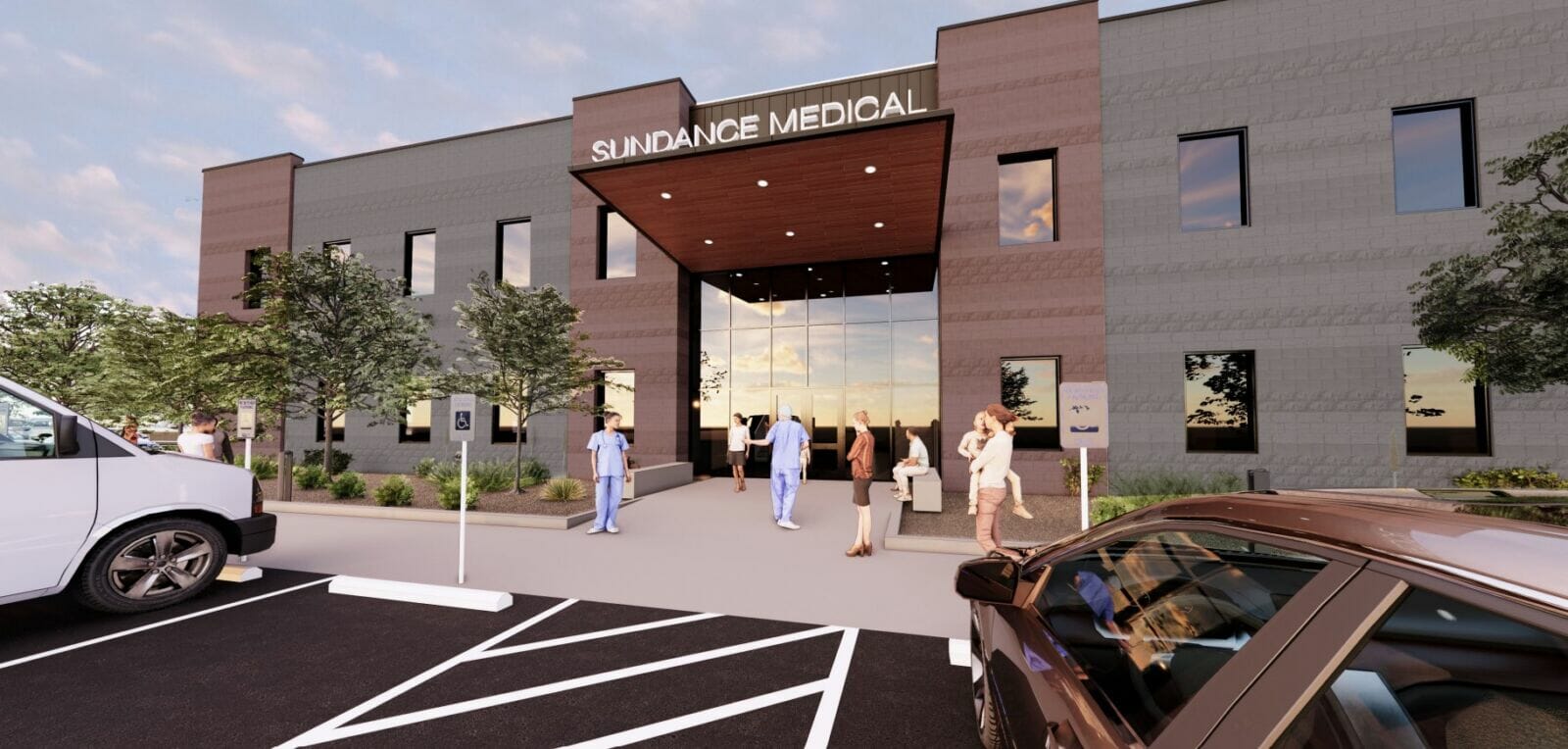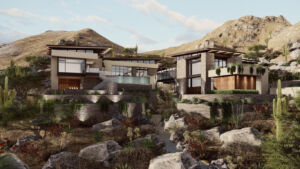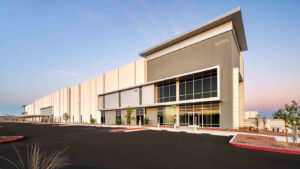Maricopa County, the state’s largest by population and home to the capital, has long been a destination for those looking to escape frigid winters in search of sunnier climes. An increase in the number of residents drives higher demand for healthcare services, and one of the popular options to address these needs are medical office buildings (MOBs). Phoenix has the eighth-largest MOB market in the U.S. totaling 21.4 million square feet, according to 42Floors.
“Phoenix is growing fast but also aging, which both affect healthcare significantly,” explains Mike Brinkley, healthcare advisor at Land Advisors Organization. “I know of five new hospitals being planned, and this is following the last few years where most of the systems have announced new bed towers on their existing campuses. So, we have two kinds of growth happening — hospitals and all other kinds of outpatient care. Where else in America does that happen? It’s very unusual.”
The U.S. Census Bureau reports from July 1, 2020, to July 1, 2021, more than 58,000 people moved to the nation’s fourth most populous county, continuing Maricopa’s long streak of inbound migration. As the Valley continues to expand, its hub-and-spoke model of healthcare is following suit to ensure residents have access to all levels of care.
“Technology has improved — we’re seeing [operations such as] hip replacements done on an outpatient basis. That wasn’t true 10 years ago, and there are many other services like that,” Brinkley continues. “There’s efficiency in the system — keep the expensive care in a hospital where you can get the economy of scale and push everything else out to where people live.”
Medical office buildings
One of the major benefits of medical office buildings is how convenient they are for patients. While tenants vary, Perry Gabuzzi, senior vice president with Kidder Mathews, says it is helpful for MOBs to have a primary care group within the building as a referral source to other specialists in the same building, along with other high-demand services such as labs and imaging.
READ ALSO: Here’s how the West Valley is attracting healthcare innovators
Not all medical office buildings, however, are the same. For example, the new Phoenix Children’s Hospital — Arrowhead Campus, will include a 45,000-square-foot MOB onsite to house orthopedics, neurology, cardiology, oncology and other specialty services. Being a tenant in such a location comes with the benefit of proximity to patients in need of care, but also has disadvantages.
“The hospital ends up being a draw [for patients], but when you lease an on-campus medical office building, you’re dealing with a whole different set of criteria than if you are off campus,” Gabuzzi explains. “Those criteria are ground lease restrictions, exclusive uses and/or hospital staff privilege requirements.”
Adds Andrea Davis, owner-designated broker at Davis Commercial AZ, “If a doctor is not affiliated with the hospital, they cannot be in one of their medical buildings on campus. There’s a growing group of doctors saying, ‘I don’t want to be affiliated with [a particular hospital]; I want some autonomy and the ability to make the choices that are best for the patient or their insurance.’”
The COVID-19 pandemic spurred smaller medical practices to combine, adding to an existing trend of consolidation. The American Medical Association reports that 50.2% of all patient care physicians were employed in 2020, up from 47.4% in 2018 and 41.8% in 2012.
“Being larger gives them better leverage to negotiate deals, but it’s also getting harder for medical providers to make a living unless they are specialists,” explains Melynn Wakeman, founder of Wakeman Integrity. Her career started in medicine, spending 17 years in the field before transitioning to commercial real estate.
“Five years ago, $165 per square foot was a typical asking price for a medical office,” she continues. “Now that’s up to $360 per square foot. But overall, if there’s a medical office for sale it’s gone immediately.”
Differences of degree
For those who don’t want to be tethered to one healthcare system, they can look for space at a freestanding MOB. Paul Devers, president of Cawley Architects, notes that features in these offices can vary depending on if they’re speculative developments or build-to-suit, but are similar in size.
“We have two of these projects that we are currently doing preliminary design work on,” he says. “They’re both two story medical offices — approximately 40,000 square feet [total], which is about 20,000 square feet per floor. We find that’s an optimal [amount of space].”
Even though MOBs have “office building” in their name, they are not built exactly like the structures many people commute to throughout the Valley. One of the primary distinctions is the need for more robust infrastructure. These facilities use more water since they have more restrooms than a regular office and sinks in every exam room.
“If there’s an imaging center or an ambulatory surgical center in the MOB, those would require backup generators in case the power goes down,” Wakeman says. “Adding an MRI machine often requires constructing the building around it. We have to take down a whole exterior load wall to put the equipment in, so it’s very costly. It’s not just an office building.”
Medical office floorplans feature scant open spaces beyond the larger than usual lobbies to accommodate patients and their family members while waiting for services. Since privacy is a concern, the internal circulation of visitors is guided by nursing staff, Devers says, which also informs the layout. There are a higher number of small exam rooms with better sound control in an MOB compared to the relatively large offices prevalent in general office buildings.
The prospect of converting an existing structure into a MOB is complicated by the infrastructure needs and desired floorplans, as well as the parking specifications.
“For medical, it’s usually around five parking spaces per 1,000 square feet of interior space, whereas a standard office could be 3 cars per 1,000,” Devers notes. “Typically, you also need a covered drop off area and more ADA [Americans with Disabilities Act] parking spaces. The requirements are a lot more stringent and necessitate more site area.”
Building a vertical parking structure can accommodate the parking ratios needed for a MOB, but the ADA has other prerequisites that traditional office buildings lack.
“General office buildings don’t necessarily have gurney-compliant elevators or the 60-inch hallway span that’s required for a patient in a wheelchair or gurney to pass other people,” Wakeman adds. “I could take a client and look at a general office, but we would have to demo everything because it wouldn’t work for the ADA.”
Follow the people
As Greater Phoenix grows, so do the communities further away from the metro’s core. The U.S. Census Bureau reports that five municipalities in Arizona are among the top 15 fastest growing in the nation, including Queen Creek, Goodyear and Buckeye. With more people living in these areas, the demand for services of all kinds has swelled.
Davis explains that retailers are often the first to build in these areas, whether it’s a quick service restaurant, coffee shop, small local strip center or a grocery store. Then, a MOB might break ground as residents try to minimize their drive time to a healthcare practitioner.
“As the community grows stronger, a hospital system will say, ‘I see that medical building is doing well and the doctors are saying they need our services out there, so let’s look at the demographics to see if they will support a hospital,’” she says. “It’s all driven by rooftops.”
Hospital systems have realized, Wakeman notes, that building large facilities all over the Phoenix Metro is cost prohibitive, but it’s still important to have care options close to where people live, such as freestanding emergency rooms and urgent cares.
“I see 25,000 to 45,000-square-foot MOBs going everywhere throughout the Valley, because [providers] need to be close to the rooftops, which are the patients,” Wakeman concludes. “Healthcare has become much more centered around taking care of people versus a ‘come to us or we’re not coming to you’ attitude.”




